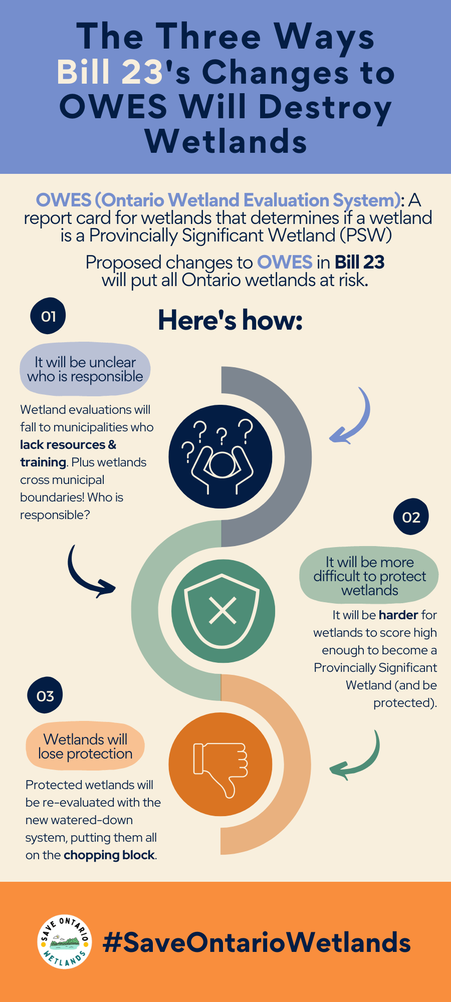How do the proposed changes to the Ontario Wetland Evaluation System endanger wetlands?
Authored by Rebecca Rooney on November 7th, 2022
Changes to OWES related to Bill 23 – the proposed More Homes Built Faster Act – undermine the wetland report card in 3 key ways:
|
1. The Ontario Ministry of Natural Resources and Forestry has been responsible for ensuring that OWES evaluations were completed by trained professionals. They provided training and certification in the OWES method. The Ministry was also responsible for maintaining the records about each evaluated wetland.
2. Two changes to OWES will make it harder for a wetland to score high enough to be classified as a Provincially Significant Wetland.
|
- Second, the changes to OWES will take away “complexing.” Under complexing, pieces of a larger, interconnected wetland are not evaluated in isolation but as an integrated whole, even if those pieces are on the property of separate landowners. This makes sense – the groundwater is connected, the flood waters run from one into another, and the birds, turtles, frogs and dragonflies all move from patch to patch. Without complexing, we will see death by a thousand cuts as no fragment is considered valuable enough on its own to be a Provincially Significant Wetland.
3. The OWES changes introduce “re-evaluations” so that already-evaluated Provincially Significant Wetlands can be re-classified using the new designed-to-fail OWES. OWES files have always been considered “open files” subject to updates, but some conservation authorities worry this change will put nearly all remaining wetlands on the chopping block.
Don’t let our valuable wetlands be destroyed to make way for sprawling, unaffordable single-family homes. Take action to Save Ontario Wetlands!

